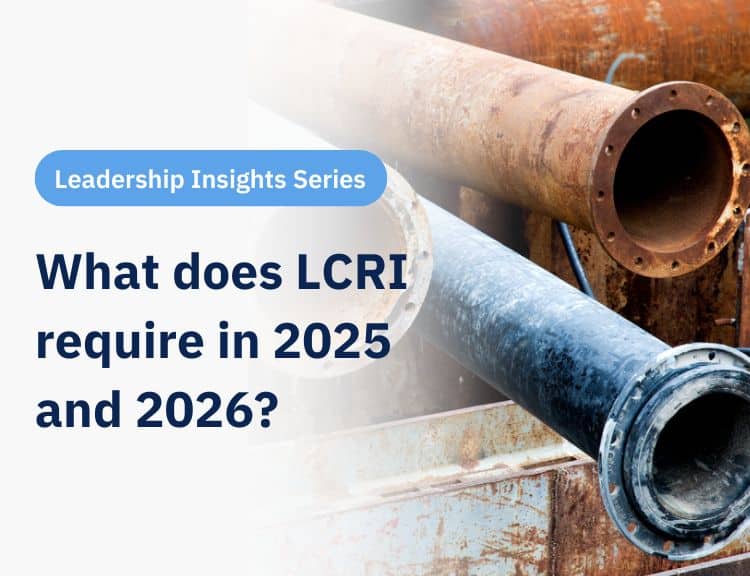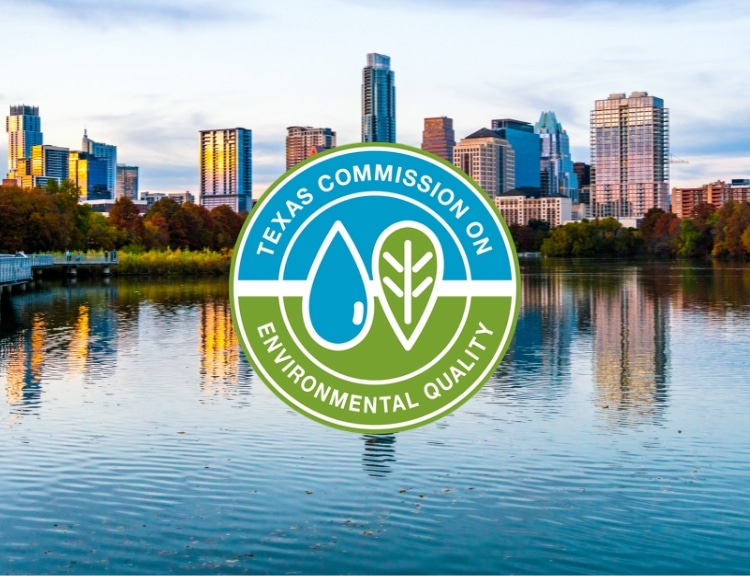We talk a lot about ‘compliance’ but the reality is that compliance is complicated and changes over time. This series breaks down compliance requirements across the LCR and the proposed LCRI to help you understand the who, what, and when of compliance.
The October 16, 2024 compliance deadline includes 2 core components: a Service Line Inventory (LSLI) and customer notifications for all customers with lead or material-unknown service lines.*
The LSLI requirement for October 2024 does not include a requirement that water systems identify or replace their unknowns; per the draft LCRI guidance, water systems only have a requirement to identify all unknown materials by the replacement deadline in 2037. For October 2024, hypothetically, a water system could throw up their hands and say, “we have no idea and no records! Let’s just label all of our service lines as unknown material and move on!” On paper, this LSLI would be compliant with EPA requirements. (We don’t recommend this)
If unknown management isn’t a compliance requirement for October 2024, why are we talking about it now?
For the purposes of LCRR/LCRI compliance, service lines of unknown material are treated as presumed lead.
So while classifying unknowns as lead/non-lead as well as having a clear plan for unknown management is not technically a requirement for October 2024, water systems that delay active identification of unknowns in their LSLI risk increased compliance requirements in the coming years leading to increased time, cost, and community pressure around lead identification and remediation.
What are some of these expected LCRI compliance requirements?
First, water systems with service lines made of lead, galvanized-requiring-replacement (GRR)**, or unknown material must create a publicly available Lead Service Line Replacement plan by the LCRI implementation date in 2027. Even if you do not anticipate finding lead or GRR in your water system, if you continue to have unknowns, you will be required to create and publicly share a LSL Replacement Plan. This plan must be created before 2027 in order to begin implementation in 2027.
As part of the replacement plan, water systems must replace or identify 10% of lead/GRR/unknown service lines per year from 2027-2037. In other words, if you have 5,000 service lines of unknown material, you’ll be required to identify the materials of 500 SLs/year (on average) during this 10 year period; if some of those lines are identified as lead or GRR, you’ll also be required to replace those lines and manage additional LSL compliance needs.
On top of the identification requirements and creating a publicly available Lead Service Line Replacement plan, water systems are also expected to trigger additional LCRI compliance requirements for continuing to have unknowns in their inventory including:
- Continually notifying customers about the potential of lead as long as the service line’s material remains unknown,
- Secure funding and access for full-service line replacements
Proactively using statistical methods and predictive modeling to identify service line materials ahead of the October 2024 deadline (or as soon as possible) can significantly reduce the cost and headache associated with unknown management for LCRI compliance. Predictive modeling drastically reduces the cost of service line material identification, limits digging to a representative sample rather than every unknown service line, and provides a clear path forward for both LSL replacements and classification of low-lead-likelihood service lines as non-lead.
Ready to tackle the unknowns in your LSLI? Schedule a consultation today.
In the next post, we’ll focus on water systems that do not anticipate lead and opportunities to use statistical methods to validate “Non-Lead” status across an entire water system, reducing ongoing LCR/LCRI requirements.
*There is a third component of LCRR compliance that remains in place for October 16, 2024 – Tier 1 public notifications following a lead action level exceedance. The Action Level Exceedance remains at 15 ppb until the LCRI implementation date in 2027. Since this requirement is ongoing, we’ll address changes in the requirement for LCRI compliance in a future post.
**A galvanized service line that is, or ever has been, downstream of a known lead service line or a service line of unknown material is considered to be galvanized-requiring-replacement. If a galvanized service line is, and always has been, downstream of service lines that are known to be non-lead based on accepted historical records or visual inspection, that galvanized line is not required to be replaced per current LCR guidance.





